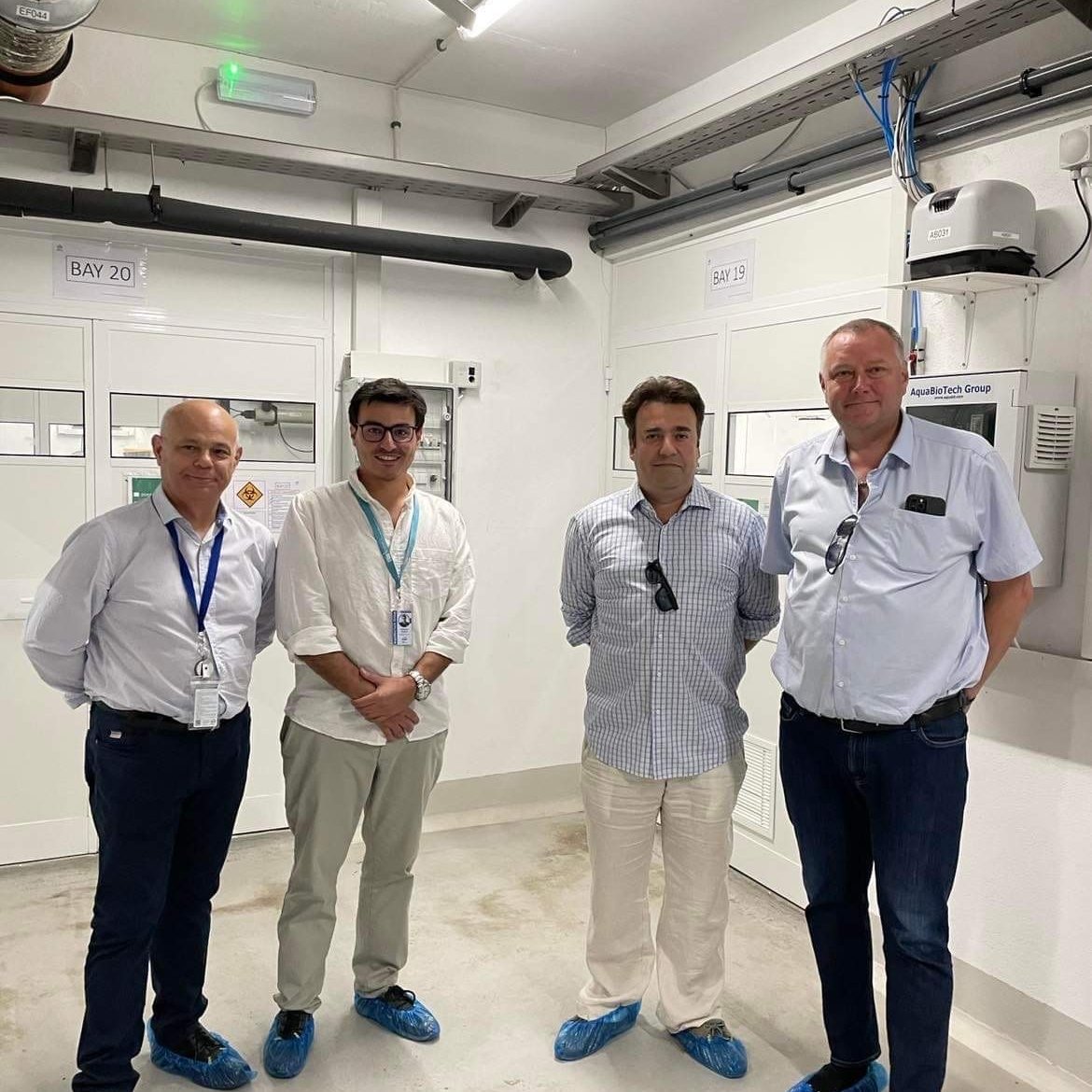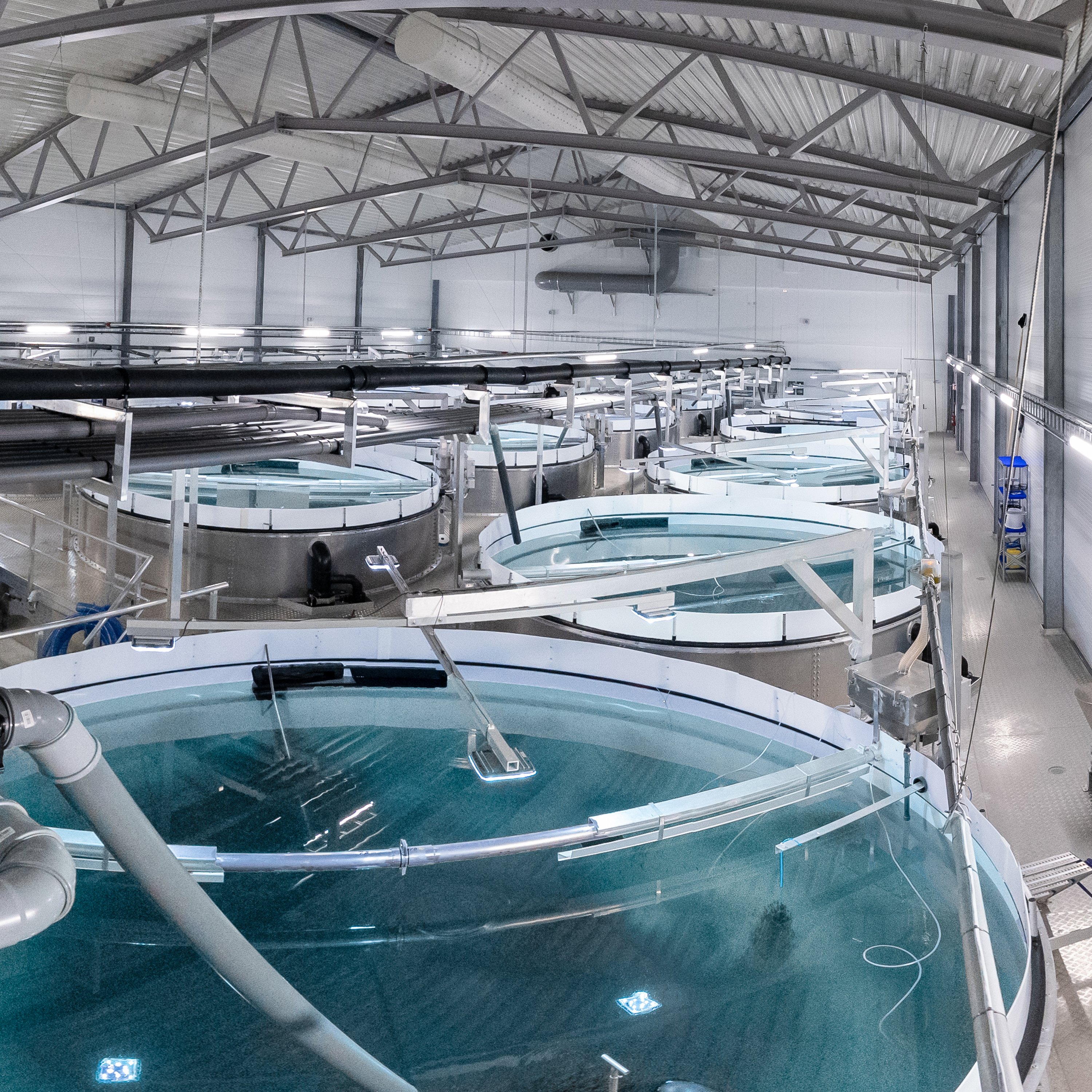
From Left: Ray J Muscat, CCO ABT, George D. Mantas, Business Development Director ABT, Shane A. Hunter, CEO ABT and Stein Inge Larsen COB Viking Aqua AS.
Why partnership is so important for us
There are three main drivers behind our partnership philosophy, reflecting global macro trends and more local aquaculture industry strengths and challenges here in Norway;
Evolving partner roles in Industry 4.0
Our ambition of an industrialised next-gen marine RAS salmon farm aligns with the more significant industry 4.0 development across multiple manufacturing and heavy industries. This backbone is data which is digitally covered in our strategic technology pillar. Still, a frequently overlooked component is the effect this technology can have on partnerships and the formation of a wider ecosystem. Research from several leading strategy firms (BCG, Deloitte, Accenture) has shown the importance of partnership, ecosystems and new business models to accelerate innovation and scale in a disruptive industry 4.0 environment.
Size of industry challenge and disruptive potential
The Salmon industry has enormous challenges related to efficiency, fish welfare and sustainability that we seek to address through our next-gen land-based RAS facility. The size and complexity of the required work to address these issues through land-based farming led us to believe that it is best solved through a strong partnership strategy. With respect to the disruptive potential of a successful next-gen RAS facility and the growing demand for sustainable proteins, we also see a market more than large enough to support a wide range of partners.
Stronger entry barriers through a partnership ecosystem
A consequence of the last decades' changes in a society driven by technology is a breakdown of existing entry barriers disrupting more and more industries. According to research done by Rita Gunther McGrath, one of the strongest new entry barriers is the new ecosystems themselves. This makes it even more critical for a company like Viking Aqua, with our next-gen RAS ambition, to play a key role in the future ecosystem of the salmon farming industry.

Photo of RAS by AquaBioTech Group
Our take on a partnership ecosystem
Business or Partnership Ecosystem means a lot of different things, but we view it as consisting of two main groups of actors working together to create value for the ecosystem.
- A core of formal strategic partners
- Most of the ecosystem is an informal network of partners connected through standards, data and a shared overall vision of the ecosystem
An essential aspect of the ecosystem is that it covers a wide range of actors, from sub-vendors to consumers and authorities.
To get a functioning ecosystem, we believe that the following principles are core to the partnerships:
- Trust
- Right level transparency
- Mutual sharing
- Fair value exchange
- Clear business models and roles
- Continuous evolvement of individual partner's role in the ecosystem
What is a qualified strategic partner?
A partner that, to a large degree, share our thinking on the areas below:
- Our disruptive vision for land-based salmon farming and our sustainability commitment
- A partnership ecosystem
- Our innovation principles
Our approach to realising our partnership and ecosystem ambition
We aim to realise our partnership and ecosystem ambition through the following mechanism:
- Secure focus through a dedicated strategic pillar
- Implementing new ways of thinking around contractual models, fairly utilising digital and rewarding mutual value creation
- Be an ambassador for transparency and openness in the industry
- Building a core of strategic partners, starting with the construction of the RAS facility and expanding across the rest of our business